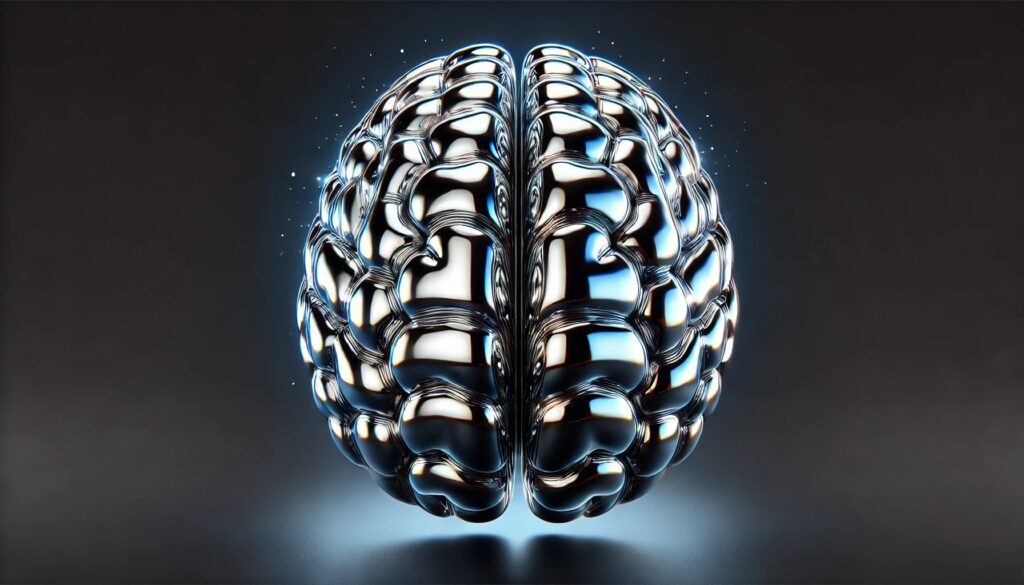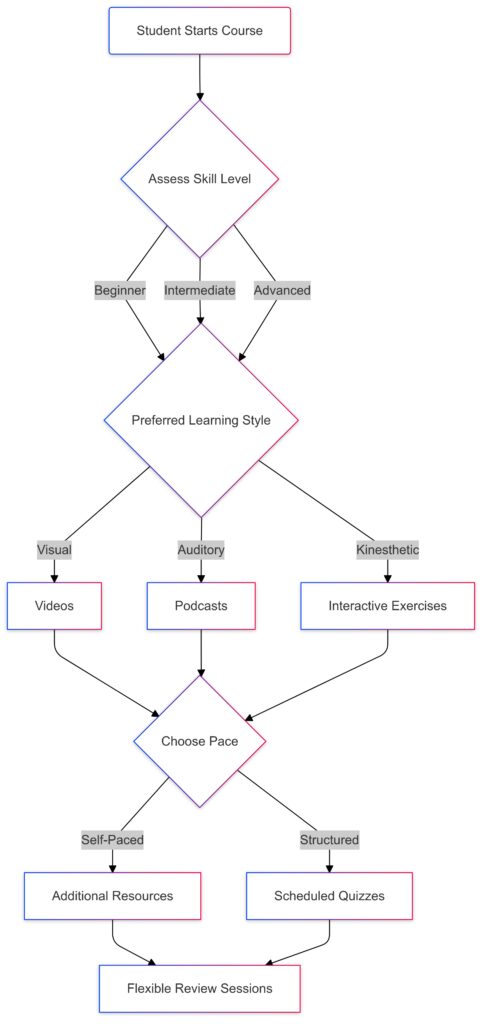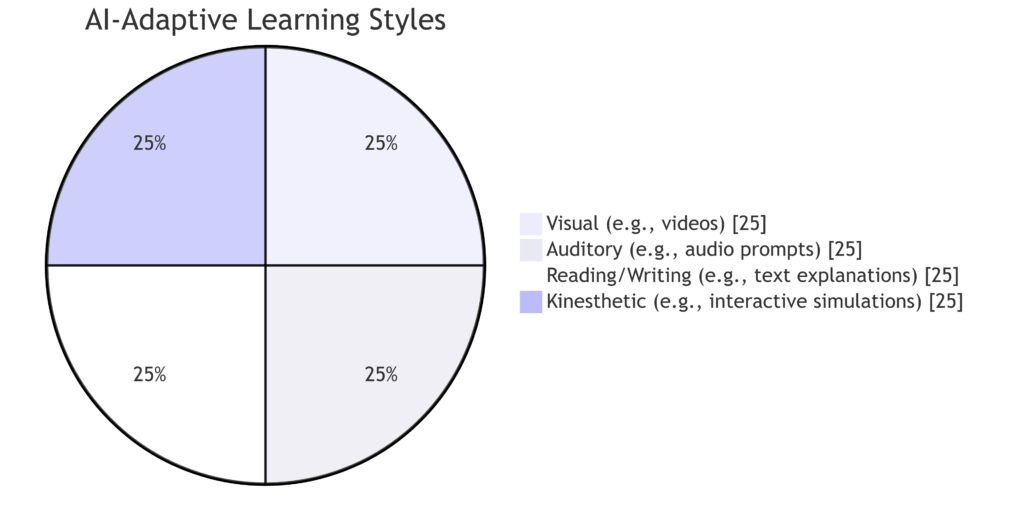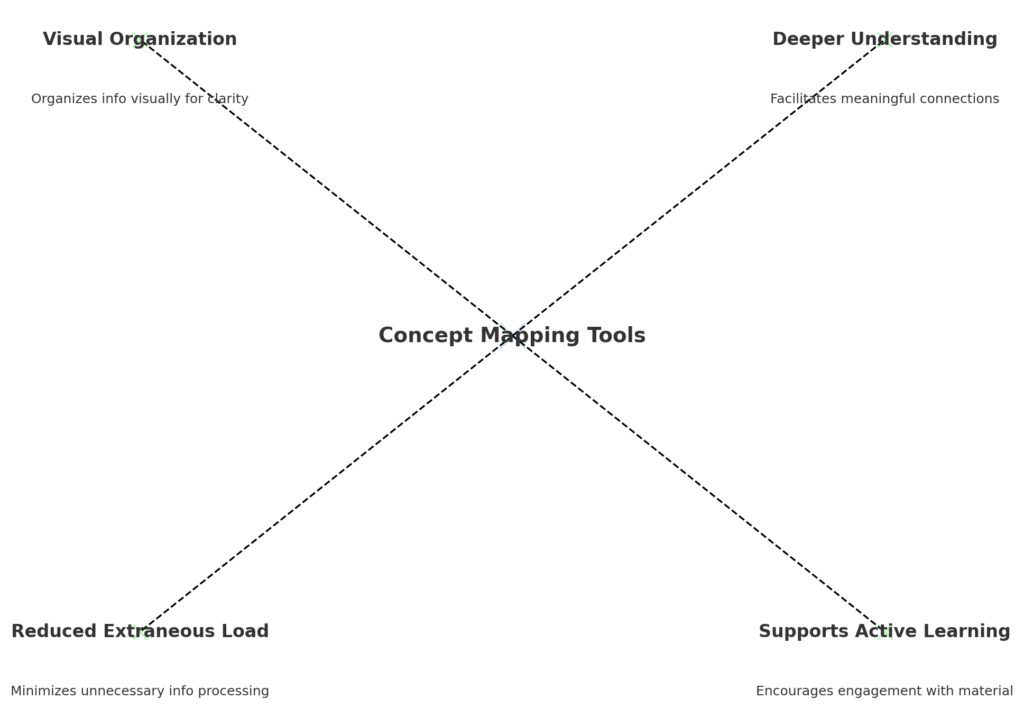
Understanding Cognitive Load Theory: The Basics
What Is Cognitive Load Theory?
Cognitive Load Theory (CLT) is the study of how much information the human brain can effectively process at once. Originating in the 1980s, this theory suggests that we have limited cognitive resources, especially when learning new information.
Overloading this capacity can reduce learning efficiency and retention, making the process feel overwhelming. CLT is particularly crucial in instructional design, as it guides how information should be structured to prevent cognitive overload.
Types of Cognitive Load
Cognitive load isn’t one-size-fits-all; instead, it includes three distinct types:
- Intrinsic Load: This refers to the inherent difficulty of the material. Complex subjects like calculus naturally require more cognitive effort than simpler tasks.
- Extraneous Load: This type results from the way information is presented. Unclear instructions or excessive information can increase this load, distracting learners.
- Germane Load: This is the good kind of load, focused on the effort that goes into processing, understanding, and integrating new information into long-term memory.

Why Cognitive Load Theory Matters in Education
CLT plays a critical role in effective education by focusing on optimal learning conditions. When learners are bombarded with too much information or complex tasks, cognitive overload kicks in, slowing down progress. Educators and instructional designers use CLT to create learning materials that are structured and engaging, facilitating efficient, lasting learning. This is where AI’s adaptive capabilities come in, providing tailored support to ease cognitive load and enhance learning.
How Artificial Intelligence Reduces Cognitive Load
Personalized Learning Pathways
AI’s strength lies in its ability to analyze each learner’s needs and adapt educational content accordingly. Personalized pathways minimize extraneous load by adjusting the pace, style, and difficulty based on a learner’s unique background. This means students spend less time on content they already know and focus more on areas that need attention, making learning smoother and more effective.

Adaptive Content Presentation
By adjusting the presentation of materials, AI can significantly reduce cognitive load. For instance, adaptive tutoring systems offer content in smaller, manageable chunks, thus easing intrinsic load for complex subjects. Some AI-driven platforms even adjust based on real-time feedback, like pauses or mistakes, responding with helpful hints or additional resources. This keeps learning at a comfortable challenge level without overwhelming students.
Support Through Real-Time Feedback
One of AI’s standout features in education is its ability to provide instant feedback. Immediate guidance helps students correct mistakes right away, reducing the germane load they’d otherwise use for troubleshooting or second-guessing. This boosts their confidence and keeps them engaged, so they feel more capable of handling new material without distraction.
AI-Powered Tools for Reducing Extraneous Load
Intelligent Tutoring Systems
Intelligent tutoring systems (ITS) use AI to simulate one-on-one instruction, offering personalized support that keeps extraneous load low. For example, an ITS might recognize when a student is struggling with a concept and present additional explanations, breaking down the topic in simpler terms. This adaptability keeps students focused, reducing distractions and promoting smoother learning experiences.
Virtual Classrooms and AI-Enhanced Learning Environments
Virtual learning environments augmented with AI allow students to engage in a setting where distractions are minimized and engagement is prioritized. These systems analyze student interactions and adjust content to maintain interest. Features like pop-up reminders, interactive questions, and short assessments help maintain focus, reducing the mental load of deciding when to revisit or review material.
AI-Driven Summarization and Note-Taking Tools
Tools that summarize information or provide visual aids also help reduce extraneous load. By presenting information concisely or turning complex ideas into visuals, AI-driven tools save learners from deciphering lengthy text. This approach makes it easier for students to process and retain information, as they can focus on understanding rather than sifting through details.
Enhancing Germane Load with AI: Promoting Deeper Understanding
Spacing and Distributed Practice Algorithms
Distributed practice, also known as spaced repetition, helps reinforce material over time. AI-based algorithms track each learner’s performance and adjust the review intervals accordingly, boosting germane load by reinforcing long-term memory. This method optimizes study schedules, reducing the chance of cognitive overload while promoting lasting comprehension.
Concept Mapping and Visualization Tools
Concept mapping tools powered by AI encourage students to visualize relationships between concepts, which deepens understanding without increasing cognitive load. By organizing material visually, these tools support germane load through active learning. Learners can see connections and grasp broader ideas more easily, transforming scattered details into a cohesive understanding.
AI for Collaborative Learning
AI-powered platforms facilitate collaborative learning by connecting students with peers based on their skill levels and learning styles. Collaborative learning enhances germane load by encouraging deeper engagement, as students teach each other, discuss ideas, and challenge one another’s understanding. AI moderates these interactions to ensure they remain constructive, preventing cognitive overload.
Balancing Cognitive Load in Complex Subjects with AI

AI in STEM Education: Simplifying Complex Concepts
STEM subjects often carry a high intrinsic load due to their complexity, making them more prone to causing cognitive overload. AI tools can help simplify these concepts. For instance, AI can break down difficult theories in physics or chemistry into digestible segments, present simulations, or even offer virtual labs. By minimizing the load involved in understanding, AI makes these subjects more accessible and less intimidating.
Using AI for Scaffolding in Learning
Scaffolding is a strategy where learners are given structured support initially, which gradually decreases as they build confidence. AI-based platforms implement scaffolding by tracking a student’s progress and reducing assistance as they become more proficient. This method keeps students engaged without overwhelming them, ensuring a balanced cognitive load through every stage of learning.
Language Processing AI in Literacy and Language Learning
For language learners, AI-powered language processing tools help simplify text and provide real-time grammar correction, reducing the extraneous load that arises from struggling with language complexities. Interactive tools, like language translation and speech recognition, also provide students with immediate feedback and vocabulary support. As learners improve, these tools gradually increase the challenge level, keeping them motivated and engaged without overloading them.
AI’s Role in Managing Cognitive Load During Assessment
Adaptive Testing for Customized Challenges
Traditional assessments can often lead to stress and cognitive overload, especially when students encounter content that’s beyond their current understanding. Adaptive testing—where the questions adjust based on a student’s performance—offers a more balanced approach. By using AI to design adaptive tests, students face questions aligned with their knowledge level, making the testing process more efficient and less overwhelming.


Visual: AI-driven videos
Auditory: Audio prompts
Reading/Writing: Text explanations
Kinesthetic: Interactive simulations
Each segment showcases how AI caters to different learning preferences.
AI in Reducing Test Anxiety and Cognitive Overload
AI can also support learners by offering practice exams that mimic the real experience, helping to reduce test anxiety. Virtual proctoring and guidance from AI tutors can offer reassurance during preparation, especially for standardized tests, making assessments feel more manageable. The AI adapts to student responses, identifying areas for review and giving reminders, which helps lower cognitive demands in stressful situations.
Instant Feedback Loops in Assessments
Traditional assessments can leave students waiting for feedback, which delays their understanding of mistakes. AI-driven assessments, however, provide real-time feedback that pinpoints areas for improvement immediately. This immediate insight allows students to address misunderstandings right away, reducing the mental load of remembering where they went wrong. Over time, this improves overall learning efficiency and helps students process new material effectively.
Reducing Cognitive Load in Professional Training Through AI
AI in Onboarding and Skill Development
In the corporate world, training often introduces a high volume of information, which can be overwhelming for new employees. AI tools streamline this process by creating personalized learning paths and reducing extraneous load in onboarding. For instance, AI-based platforms can prioritize essential skills and relevant information, saving employees from information overload and helping them settle into their roles more confidently.
VR and AR Powered by AI for Hands-On Learning
Virtual Reality (VR) and Augmented Reality (AR), powered by AI, are transformative in training environments requiring hands-on practice. VR/AR simulations allow learners to engage with complex tasks safely and without cognitive overload. AI enhances these experiences by analyzing user performance, adjusting scenarios in real time, and reducing unnecessary elements to focus learners on core skills. This method helps professionals retain information more effectively and be better prepared for real-world scenarios.
Continuous Skill Development Through AI-Driven Microlearning
Microlearning, or learning in small, manageable bursts, is a popular method in professional development. AI takes microlearning to the next level by determining the most relevant skills or knowledge gaps and delivering content tailored to those areas. By spacing out learning over time and delivering it in digestible pieces, AI helps employees reinforce skills without overwhelming their cognitive resources.
The Future of AI and Cognitive Load Theory in Education
Potential for Lifelong Learning with AI
As AI evolves, its potential for supporting lifelong learning grows. By continuously adapting to a learner’s progress and goals, AI can act as a personal guide, adjusting content and difficulty throughout one’s lifetime. Whether for personal growth, career advancement, or new hobbies, AI-driven learning tools make education accessible and manageable for learners of all ages.
Integrating Emotional AI to Monitor Cognitive Load
One emerging area in AI is emotional AI, which can assess a learner’s mental state by analyzing facial expressions, voice, or behavior. Emotional AI can detect signs of cognitive overload, such as frustration or fatigue, and adjust the learning environment accordingly. For instance, it could suggest a break, offer encouragement, or present content in a simpler format to ease stress, enhancing the learning experience.
Promoting Equity in Learning with AI
AI has the potential to make quality education more equitable by providing personalized support that accommodates different learning styles, abilities, and backgrounds. By applying Cognitive Load Theory principles, AI-powered tools can adjust content to be inclusive and effective for all learners, regardless of their initial skill level. In underserved regions, AI-based platforms also offer access to quality education without requiring a physical classroom, making learning accessible globally.
In essence, AI and Cognitive Load Theory intersect in ways that optimize human learning by reducing mental strain and maximizing understanding. From personalized instruction to real-time adjustments, AI can make learning more enjoyable, manageable, and accessible for everyone.
FAQs
What types of AI tools help reduce cognitive load?
AI tools like intelligent tutoring systems, adaptive testing, and summarization tools are particularly useful for reducing cognitive load. These tools provide real-time feedback, personalized content, and simplified information presentation, which helps students focus on understanding rather than processing overwhelming amounts of data.
How does AI personalize learning paths for different students?
AI analyzes a student’s past performance, preferences, and learning speed to create customized learning pathways. This means it can adjust the level of challenge, simplify complex concepts, or provide additional resources, making learning efficient and avoiding cognitive overload.
Can AI help reduce test anxiety for students?
Yes, AI can reduce test anxiety by providing practice exams that mirror the actual testing experience, helping students feel more prepared. Adaptive testing also customizes questions to fit a student’s level, making assessments feel less daunting and helping students focus on understanding rather than stress.
How is AI applied in professional training to manage cognitive load?
In professional training, AI tools are used to create personalized onboarding and skill-building programs, often in small, manageable learning segments. AI-powered VR and AR simulations also offer immersive training environments, allowing employees to gain practical experience without overwhelming information or stress.
What role does emotional AI play in cognitive load management?
Emotional AI can monitor signs of cognitive overload, such as frustration or stress, by analyzing facial expressions, speech, or behavioral cues. By detecting these signs, emotional AI can adjust the learning environment, offer encouragement, or suggest a break, ensuring a balanced cognitive load.
Why is AI important for lifelong learning?
AI supports lifelong learning by continuously adapting to a learner’s goals and progress, making it ideal for those seeking personal growth or professional advancement. With its ability to offer personalized, accessible learning on demand, AI enables learning that’s effective and adaptable at any age.
How does AI promote equity in education?
AI-driven tools provide quality, personalized learning experiences to diverse groups, including those in underserved regions. By aligning educational content with each learner’s needs, AI can make learning more inclusive and accessible, bridging gaps in educational resources worldwide.
What is the difference between intrinsic, extraneous, and germane cognitive load?
Intrinsic load relates to the inherent difficulty of the subject matter itself. Extraneous load refers to the way information is presented, with unnecessary details or confusing formats increasing mental effort. Germane load is the beneficial mental effort needed to understand and integrate new information into long-term memory. Effective learning minimizes extraneous load while balancing intrinsic and germane load to enhance comprehension.
How do AI-powered tools adapt to different learning styles?
AI tools assess a learner’s preferences and performance patterns, allowing them to adjust content delivery. For example, visual learners might receive more diagrams, while auditory learners may have access to narrated explanations. This customization improves engagement and helps learners absorb information in ways that feel natural to them.
Can AI support learners with cognitive disabilities?
Yes, AI can provide invaluable support for learners with cognitive disabilities by offering tailored resources and pacing. Features like simplified language, visual aids, and interactive exercises are easily adapted by AI, creating a more accessible and inclusive learning environment that accommodates individual needs.
How do concept mapping tools help with cognitive load?
AI-driven concept mapping tools visually organize information, showing relationships between ideas and concepts. This helps learners see the big picture and understand how topics are interconnected. By structuring information clearly, these tools reduce extraneous load and support deeper, more meaningful learning.

- Visual Organization: Organizes information visually for clarity.
- Deeper Understanding: Facilitates meaningful connections.
- Reduced Extraneous Load: Minimizes unnecessary information processing.
- Supports Active Learning: Encourages engagement with material.
Each smaller bubble connects to the central bubble, showing how these benefits contribute to the overall value of concept mapping tools. Let me know if you’d like any adjustments!
What is microlearning, and how does AI enhance it?
Microlearning breaks down complex topics into small, digestible lessons that are easier to understand. AI enhances microlearning by determining a learner’s progress and tailoring content in real-time. This approach keeps information manageable and promotes retention without overwhelming learners.
How does AI facilitate collaborative learning without increasing cognitive load?
AI-powered collaborative platforms connect learners based on their skill levels and styles, ensuring that group work remains productive. AI can suggest topics, organize group discussions, and mediate interactions, helping students focus on learning and peer exchange without the added stress of unstructured collaboration.
Are there any risks of cognitive overload with AI-driven tools?
If not carefully implemented, AI tools can add to cognitive load by presenting too many features or notifications. To avoid this, effective AI tools are designed with a user-friendly interface and only provide relevant information when needed, helping learners stay focused and organized without distraction.
How does AI help instructors manage cognitive load in the classroom?
AI can assist instructors by analyzing student performance data and highlighting areas where students may be struggling. This allows teachers to adjust their lessons to address specific challenges, provide targeted support, or modify content to better suit student needs. AI-driven analytics reduce the cognitive load for instructors by streamlining lesson planning and offering insights that support differentiated instruction.
Can AI support learners in self-directed study?
Yes, AI enables effective self-directed study by guiding learners with adaptive recommendations, personalized practice exercises, and resources based on their learning progress. AI-driven study platforms help learners manage their pace and track their own goals, ensuring they stay engaged without feeling overwhelmed by the volume of material.
How can AI-driven VR simulations aid in high-cognitive-load fields like medicine or engineering?
In fields like medicine and engineering, VR simulations powered by AI allow students to engage in hands-on practice with complex procedures in a safe, controlled environment. By simulating real-world challenges and giving instant feedback, these simulations help learners build confidence and reduce cognitive load. They can practice intricate skills without the immediate pressures of real-life consequences.
How does AI balance cognitive load for multilingual learners?
AI language tools can provide real-time translations, simplify complex terminology, or present visual aids, all of which make learning content easier to understand for multilingual learners. By reducing extraneous load, these tools allow students to focus on comprehending and retaining information rather than struggling with language barriers.

This expanded layout clarifies AI’s role in reducing cognitive barriers and supporting more effective learning outcomes.
What is the role of AI in spaced repetition and memory retention?
AI optimizes spaced repetition by analyzing each learner’s mastery of specific topics and scheduling reviews at scientifically-backed intervals. This approach reinforces memory without overwhelming cognitive load, helping students retain information long-term without excessive repetition or mental fatigue.
How can AI help instructors identify cognitive overload in students?
AI can track student behavior, including the time spent on tasks, number of attempts, and error patterns. If a student appears to be struggling or takes longer than average on specific tasks, AI can alert the instructor, suggesting that the student might be experiencing cognitive overload. This allows teachers to intervene and adjust the material or offer additional support.
What benefits does AI offer in standardized test preparation?
AI-driven test prep platforms adapt questions and explanations to each student’s learning level, reducing the risk of cognitive overload. These platforms often include real-time analytics that track a student’s progress and highlight areas for review. By presenting material tailored to each learner, AI makes standardized test preparation less stressful and more effective.
Can AI support creativity and critical thinking without increasing cognitive load?
Yes, AI can enhance creativity and critical thinking by providing relevant prompts, tools, and resources that stimulate new ideas. For example, AI can suggest related topics, propose alternative problem-solving methods, or offer real-world applications. By presenting these options in a guided way, AI encourages higher-order thinking without the cognitive overload that might occur if learners had to locate and filter these resources independently.
Resources
- Learning Theories – Cognitive Load Theory
Learning-Theories.com provides a comprehensive overview of cognitive load theory, including real-world applications. This resource is excellent for quick, accessible information on CLT principles. - EDUCAUSE Review – “Artificial Intelligence in Higher Education: Applications, Promise, and Perils”
EDUCAUSE frequently publishes articles on AI in education, including cognitive load and adaptive learning technologies. Their reviews highlight AI’s role in managing workload and enhancing learning. - EdTech Magazine – “How Artificial Intelligence Reduces Cognitive Load for Educators and Students”
EdTech Magazine offers articles and insights on AI’s role in education, specifically how it reduces cognitive load. Topics include adaptive learning, intelligent tutoring systems, and real-world AI applications in classrooms.